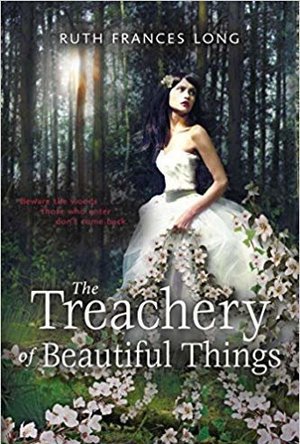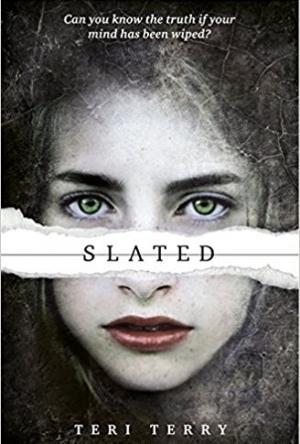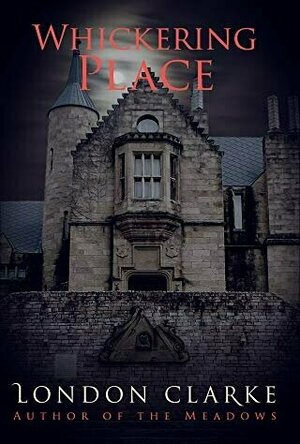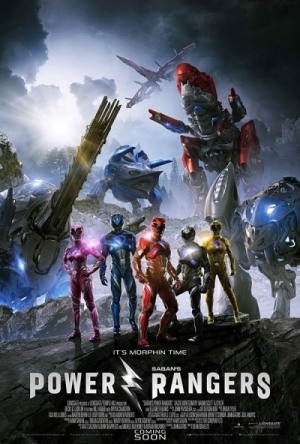Heather Cranmer (2721 KP) rated Second Verse in Books
Jun 7, 2018
I first saw this book on Goodreads, and I knew I had to have it when I read the word "haunted" in the book synopsis. I'm so happy I had a chance to read this book because it was awesome!
I think the blurb is fantastically written! It definitely made me want to read the book, and I like how it doesn't even mention the tiniest spoiler which I love.
I'm not a big fan of the title simply because it make me think of a book about someone's struggle with music. It doesn't really give off the whole ghostly mystery book vibe.
I also don't really care for the cover simply because based on just the cover, it never made me want to pick up the book to read it. I would've liked to have had a creepier looking cover for this book even if the cover photo is, what I think, supposed to be the picture Lange drew.
I did enjoy the world building very much. I felt that the world of Second Verse definitely had solid building. I was experiencing everything that Lange was, or at least, it felt that way. As for the setting, I was a bit confused at the very beginning about the type of school they were in. It was mentioned they had a creative period and there was talk about music, but it never really talked about them being in a music school. Perhaps it was implied, and I just couldn't work it out at the beginning or maybe I just read about it and forgot.
The pacing was only slow for about the first 5 or so pages. After that, the pacing picks up and holds your attention for the rest of the book only letting you go once the book comes to an end. I was super enthralled throughout the entire book (with the exception of the first few pages).
I really enjoyed the plot! There is a major element in this plot that I won't talk about due to spoilers, but it wasn't mentioned in the book's blurb. I would've never guessed it was a book on that theme. Trust me, I'd elaborate if I could, but I don't want to spoil it for those that may wish to read this book. There is a plot twist that I never saw coming, and the ending was just wow! I will say that the ending does leave this book open for a sequel.
The characters felt very real. I enjoyed the character of Lange. It was interesting to see how she reacted to everything around her. I felt as if I probably would've made the same choices if I was in her shoes. Vaughn is also a likable character, and I loved how he was always trying to make Lange feel safe. They were such a cute couple! Even though Ginny wasn't an actual character, it was still interesting to read about her and her love for her beau.
The dialogue flowed very smoothly, and the character interactions felt real. The language used works for this book and its genre.
Overall, Second Verse is a fantastic read that incorporates a bit of mystery, paranormal, and romance. It definitely held my attention, and I was sad when I had come to the end of the book because I didn't want it to end.
I'd recommend this book to those aged 14+ who enjoy paranormal, mystery, and romance books and those who love great plot twists.
<b>I'd give Second Verse by Jennifer Walkup a 4.5 out of 5.</b>
(I received a free paperback copy of this book from the tour host in exchange for a fair and honest review).
Heather Cranmer (2721 KP) rated The Treachery of Beautiful Things in Books
Jun 7, 2018
I had been wanting to read this book since I had first heard about it. I was lucky enough to win it in a blog competition. I'm so glad I did because I loved every second of this book!! It reminded me a little bit like Snow White; not the Disney version but the Grimm's Fairy Tales version.
Jenny is 10 years old when she sees the forest swallow her older brother into the ground. She tries to tell everyone around her that the forest took her brother, but yet, no one believes her. Seven years later, Jenny is walking by the forest when she hears flute music like her brother used to play. Thinking she may be able to find him, she ventures into the very same forest. Little does she know what danger lurks in the forest. Will she be able to save her brother or will she be too late?
The Treachery of Beautiful Things is such a wonderful title for this book! Beautiful things can be dangerous despite their beauty, and how right that is!! The forest is full of beautiful creatures, but not everything is as it seems.
The cover of this book is absolutely gorgeous!! Instead of being just some random picture on the cover, the cover is from a scene in the book, and it fits in beautifully with the title. Well done to the cover artist and the author for choosing this cover. I am entranced by it!
The world building and setting of the forest where the majority of this story takes place is done really well. The author uses great descriptions to make the reader feel as if he/she is a part of it. I easily lost myself in this book and in the forest thanks to the fantastic world building.
The pacing in The Treachery of Beautiful Things is absolutely fantastic! Not once in the story did I feel my attention waning. I was enthralled in the story from the very first page. I reluctantly had to put the book down to do real life things. However, when I had free time, I was devouring this book!
The dialogue is perfect for readers of teen years on up. The dialogue between the characters was very interesting. I especially loved the dialogue between Puck and Jenny.
The author does a great job with character building. I felt the characters were well-developed, and each had their own unique personalities. I loved the character of Jenny. I loved how determined she was to stop at nothing to protect those she loved. Jack was a fantastic character as well. I love how the author made him out to be conflicted but in a believable way. Jack comes across as being a real person instead of a character in a book. Puck was definitely my favourite character by far. He was the one who interjected a lot of humour into this story. I'm thinking the author got the inspiration for Puck from A Midsummer's Night's Dream by Shakespeare. Puck was loyal to a fault to the king, yet he has a heart of gold. Tatania/Mab made an excellent baddie. She reminded me a lot of the queen from Snow White. Oberon was a great baddie as well although he didn't feature as much as Tatania/Mab. We don't learn much about his character until towards the end of the book.
The Treachery of Beautiful Things by Ruth Frances Long is a fantastic story of romance, fairy tale, and suspense. It will keep you wanting more long after you've finished the book.
I'd recommend this book to everyone aged 13+. It's such a lovely read!
Heather Cranmer (2721 KP) rated Slated (Slated #1) in Books
Jun 7, 2018
Slated by Teri Terry has been on my to read list for ages, so when I found out I was going to be moving from the UK to the US, I bought it ASAP because it isn't out over here in the US yet. I'm so glad I bought this book. It is so so so good!!
Kyla is a 16 year old girl whose memories have been erased in order to be a more compliant citizen. In other words, Kyla has been slated because she supposedly broke the law. Kyla can't remember anything about her previous life although she is having terrible nightmares that seem too real to just be a dream. Plus, she keeps drawing things that she can't remember ever seeing. Soon, people start disappearing around Kyla for no reason at all. Are they being Slated or is there something else going on?
The title of this book is very straight forward. Slating is the main point of this book. I wouldn't have picked a different title as I feel this one is perfect.
The cover is a bit too plain and boring. It's just kind of meh. Anyone who has read my reviews in the past knows how I don't like covers that just have a face on them. To me, it is an easy way out. It doesn't take much thought when it comes to putting a face on a cover. I wish the cover would show a bit more of the story.
The world building was great! The world in which Kyla lived felt very believable. In fact, the whole storyline felt believable. I especially thought the scenes in which Kyla is in the hospital felt like I was living them as well.
I felt that the author really nailed the pacing. I was hooked from the very first page. Everything just flowed so easily, and I felt myself become totally lost in the pages as the story progressed. It only took me longer to read Slated because I moved from the UK to the US so I didn't have much time to read, otherwise, I'd have had that book read in about 3 days or less.
The dialogue in Slated feels natural. This is a YA book, and the dialogue fits the genre perfectly. Not once does the dialogue feel forced or sound like it was adults speaking. I really enjoyed the internal conflict when it came to Kyla. As for swearing, I don't think there is any in this book.
All the characters in Slated were believable. Kyla really seemed to come across as a character who had lost their memory. At first, I was a bit concerned because Kyla seemed to know what things were even though she had lost all of her memory including motor skills. However, this was explained in the book. Kyla seems very much like a teenage girl. We don't really get to know too much about Amy or Jazz, but even they felt like real characters. For some reason, I couldn't connect to Ben. This wasn't because he was a poorly written character, but it was more of a personal thing. I just found him a tad bit annoying for some reason that I can't explain. My favourite character was Kyla's mum. I just loved the way she interacted with Kyla. Both Kyla's mum and dad are both hiding something that hasn't been revealed in this first book.
Everything about this book was fantastic. I can't think of one single thing wrong with it. It was so much fun to read. I'm only disappointed that I have to wait so long for the second book in the series to be out.
I'd recommend this book to everyone aged 14+ due to violence.
Heather Cranmer (2721 KP) rated Whickering Place (Legacy of Darkness #2) in Books
Nov 22, 2019
If you're a fan of vampires, ghosts, and a touch of romance, you will love Whickering Place. I'm not going to rehash the synopsis since you will have probably read it yourself, and the synopsis does such a great job at describing this book. Even though I'm not a fan of the whole vampire movement in media, I really did enjoy Whickering Place. The plot was done brilliantly. I very much enjoyed the world building. In fact, I couldn't find one fault with the world building. Clarke does a fantastic job at making sure you're left feeling like you are a bystander amidst all the action. While there is a cliffhanger at the end of Whickering Place, this was done intentionally and will hopefully all will be revealed in the next book in the series.
The pacing was slow for about the first quarter or so of the book as the backstory and plot were being set up. I will admit that I did think about just giving up on Whickering Place, but I'm glad I kept reading because wow, the pacing definitely picked up after that! Once it picked up, there was no going back. I devoured each page. The suspense kept me on my toes! I was heavily invested in the story and all of the characters in Whickering Place.
Each and every character no matter how minor or major was written fantastically! Each character had their own personality, and it felt as if I was reading about a real flesh and blood person instead of just a character in a book. Avery was a great character. I could sort of relate to her agoraphobia. I used to be almost as bad as her. I felt bad for her, and I was always hoping she would get better so she could have more of a life. I kept thinking that Avery and myself could become great friends if she was real. It was almost as if every decision she made was one that I would have made. Pearse was definitely an interesting character. I did feel bad for him when it came to The Colony. I was always hoping he'd be able to get away from them. He seemed like he had a good heart. I also felt bad for Colin when it came to Avery. It was very obvious that he cared deeply for her. Colin definitely came across as a stand up sort of guy! I didn't really care for Maris, not because she was written poorly. She was actually written quite well! She just reminded me of those pretty mean girls I knew back when I was in school. I didn't know what to think of Cassie. I liked Cassie, and I loved her personality and how willing she was to help out, but I was never sure if I could trust her 100 percent.
Trigger warnings for Whickering Place include profanity (there's not a lot though), sexual situations (although these aren't graphic, and there aren't many sexual scenes), murder, attempted murder, alcohol, dealings with the occult, demons, and violence.
Overall, Whickering Place is a thrilling read which such a fantastic set of characters and an intense plot! This is one of those books that even though it starts out slow, it does a fantastic job at pulling you right into its pages and doesn't let you go! I would definitely recommend Whickering Place by London Clarke to everyone aged 17+ who loves getting lost in a good thriller.

Fashion Makeup Salon Games 3D: Celebrity Makeover and Beauty Studio Game
Beauty, Games and Lifestyle
App
***Are you tired of playing old and boring beauty salon makeover girl games that don’t offer the...
Gareth von Kallenbach (980 KP) rated Power Rangers (2017) in Movies
Jul 12, 2019
Fans on social media have often expressed their dissatisfaction with films not staying true to the origin stories or their inabil;ity to retain much of the character and charm that endeared them to their fans. Power Rangers does not suffer from this dilemma. As someone who watched the series as it first hit American markets in the 1990s, I was unsure of how this story would transfer onto the big screen.
It wasn’t something that I was too personally invested in. It was a series in which I considered myself to be a casual fan understanding the background, characters, and general direction of the show. I wasn’t prepared for what the film version offered.
This adaptation is near perfect in the way that it is able to create a modern, mature version that incorporates many aspects into weaving their story.
The basics of the film are roughly the same as the show: it is based in Angel Grove, there are five teenagers serving the role of rangers whose goal is to save the world, and all the complexities that come with being a superhero who has a “real life.”
One of the more remarkable issues related to the film is how the writers and director are able to be inclusive with their characters without being condescending to their audiences old and new. We get a glimpse of a team that is more colorful and diverse. Where the original crew showed a group of youths of different races, the film version does not stop with race as demonstrating the variety that exists within our world. The film allows for the inclusion of people on the autism spectrum, as well as, allowing for the inclusion of the LGBT community. The film shows audiences that there are people just like them or people that they know in the superhero realm. It is not limited by race, gender, sexual orientation, or cognitive development.
Power Rangers itself is a fun movie with depth. As the film continued, I tried to look for areas to pick it apart and find those pieces that really detracted from the story. The film has its faults in a simply developing storyline, but that goes with the franchise. It isn’t supposed to be complex or overbearing. The humor ranges from sophomoric to sophisticated. The film is accessible to those who are new to the franchise and those who have been watching since its inception. Additionally, it is a superhero movie it is not insulting to its audience. It demonstrates the difficulties that exist with teen life, presents real problems that they have to deal with in contrast to the fantasy that they are living out as part of this team.
The film is beautifully shot and the CGI is nearly seamless (the film is not overly reliant on it, either). The fighting and action sequences are as much a part of the story as the characters themselves. Power Rangers allows for audiences to be entertained visually and comedically. Additionally, it allows for those of us who have not watched or followed the Power Rangers in a while to be a bit nostalgic and look back to when we ourselves could not get home quickly enough for “Morphin’ Time.” The film is updated, mature, and will have fans young and old beaming with delight.

Cubasis 2 - Mobile Music Creation System
Music and Entertainment
App
Cubasis 2 equals ease of use and is as powerful as a fully featured iOS-based music production...

KORG iKaossilator
Music and Entertainment
App
The inspiringly creative Kaossilator comes to iPhone! Korg has revolutionized the musical...

Luxy -#1 Millionaire Dating
Dating, Finance and Social Networking
App
Luxy has been featured extensively on CNN, BBC, Business Insider, CNBC, ABC, The New York Times, The...
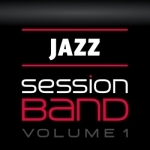
SessionBand Jazz - Volume 1
Music and Entertainment
App
All SessionBand apps now half price for a limited time only! Jamie Cullum: "An extraordinarily...

